Two forms of flying are racing at us at increasing speed. This is both scary and promising at once. What can we expect? My crystal ball is no better than yours, but let me tell you what I can imagine may be headed our way.
I refer to two generally unrelated activities in the air: autonomous aircraft and FPV drones. Most pilots to whom I’ve spoken seem intrigued by these innovations and a few are enjoying their quadcopters, myself included.
Others are not so sure if they like the idea of either unmanned but man-carrying aircraft or a swarm of drones buzzing about the airport or neighborhood. I understand this viewpoint. Most of us treasure our privacy and don’t want it invaded.
Yet I invite you consider the following scenario… perhaps 3-10 years in the future.
Think about why you like recreational flying, in your LSA, light kit, or ultralight. I’ve asked many pilots this question; the most common answer is sightseeing, seeing your neighborhood or the planet from a few hundred or a few thousand feet up. Glorious, most of us agree!
Sure, we also like to fly cross country… or fly from off water… or perform aerobatics… or master soaring flight… take a friend or the family on an aerial excursion… travel regionally. Might some of these activities be done another way, specifically, could a drone do the job? You might not think so but please keep reading.
At Sebring 2017, the Drone Zone was of interest to check out the equipment but also to witness the series of short races vying for a $25,000 purse. Let me tell you, this was one fast-paced affair. Drones about the size of a dinner plate whipped around a turning, twisting, up and down course at 80 miles an hour! I could not even follow the action, such a frenzy it was.
No racers ever glanced at their aircraft. This isn’t like standard radio control flying where the pilot holds a joystick controller and closely watches their flying RC model.
Racers use VR goggles — basically a hood into which you insert your smartphone — to direct the aircraft using FPV, First-Person View. They see what a tiny little pilot seated in the drone would see. Are you starting to get where I’m going with this?
Imagine it is 2021. You go out in your back yard, or go to a park, or any number of places. You prepare your drone for launch, snap in your smartphone, put on your VR goggles, pick up the controller and go flying. Once you get this method down, you might replicate a real sightseeing flight to a significant degree.
This can be done today. In five or 10 years far more sophisticated and longer-flying drones with rapidly-advancing technology will help prevent conflicts or crashes. A vastly improved VR (Virtual Reality) experience might include 3D, 360-degree view (even wider than your big-windowed LSA). Can you see that flying by drone could replicate at least some of the joy we feel when we go aloft in our little airplanes?
Of course, such FPV drone flying won’t replace manned flying or the satisfying experience of mastering stick and rudder. Yet FPV drones could be a game changer, perhaps getting more people involved with flying. Cross pollination might follow with drone pilots wanting to sample manned flight.
Here’s a kicker. After observing the drone races for a while, I wandered over to a vendor to ask how much a basic drone racing rig would cost. A compact quad copter, batteries, charger, control unit, VR goggles… all you need to race: $275; you use the smartphone you already own. These prices have dropped and will surely go down further. How do you suppose that cost sounds to a young person compared to taking flying lessons in what the drone guys call “full-size aircraft?”
Now, let’s add another dimension.
To the futuristic superdrone scenario, factor in recent news about the Dubai Transportation authority allegedly approving operations within a year (!!) for a fleet of eHang autonomously flown air taxis. Does this sound far-fetched and unlikely? Yep, it does to me, too. However, many believe it is only a matter of time before such services might be available. We may know in a year.
The smallish eHang 184 is a single seater, which makes it seem more achieveable with today’s technology. Its four twin-motored boom arms fold up to occupy minimal space. Plus, these things keep getting smarter and such smart tech has gone mainstream.
Recently I watched a friend’s Roomba autonomous vacuum cleaner work all by itself, even recognizing when the battery starts to run low and heading “home” to dock before running out of juice. It was amazing to watch but you don’t get much more mundane than vacuum cleaning.
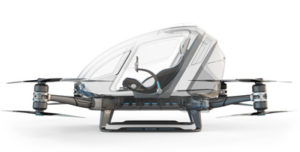
That’s not a joystick inside. It is a controller unit to tell eHang 184 where to go.
Apply the tech needed to provide autonomous air taxi service to drones of tomorrow and you get something surprising. Two people (or more!) sharing VR goggles means you could take friends along for a flight, perhaps where everyone can watch where they want, not just 360 degrees, but a full spherical view. Meanwhile, pilot and “passengers” are safely on the ground merely enjoying the view through the VR apparatus.
Go even further with chairs that transmit motion — another technology that is already here and not particularly expensive — and the sensation of a sightseeing flight around your part of the world while sitting in your living room becomes a very possible reality.
Like all tech, flying an aircraft is largely information, just data. With enough data and improving sensors, eHang or its certain competitors could reasonably be expected to navigate from building top to other designated landing areas in good safety and with no human control, and at ever-decreasing cost. Because tech is eminently sharable, drones and autonomous vehicles benefit from each other’s progress.
FPV drone flying and autonomous flying are coming. Should you adapt? Should you resist? It might be time to give serious thought to an alternative future of flying.
To see what FPV drone flying looks like from inside the VR goggles, check this video (one of many available):


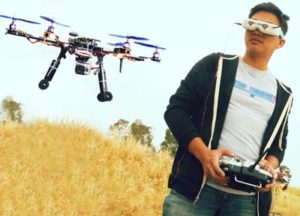
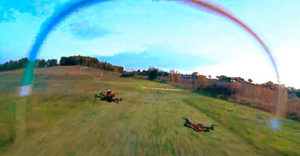
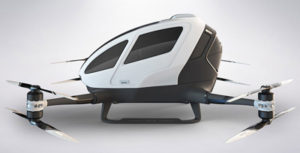
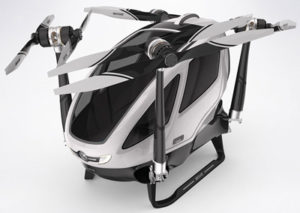
Leave a Reply